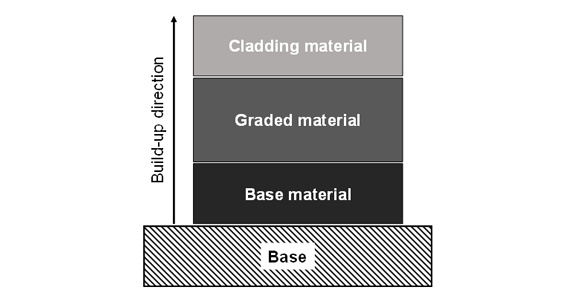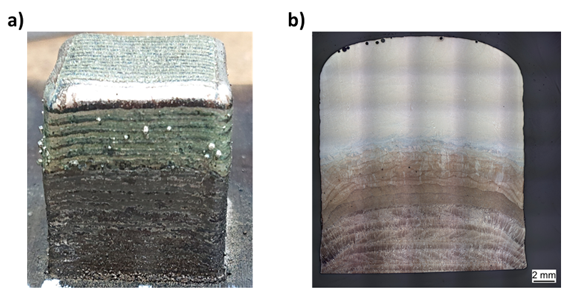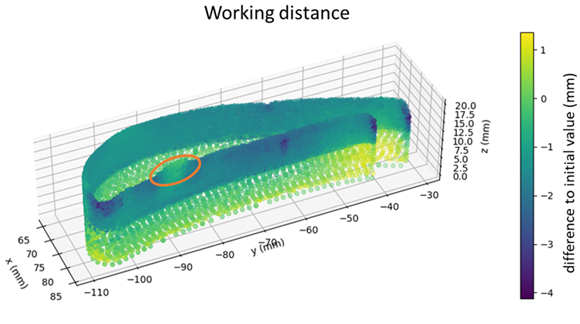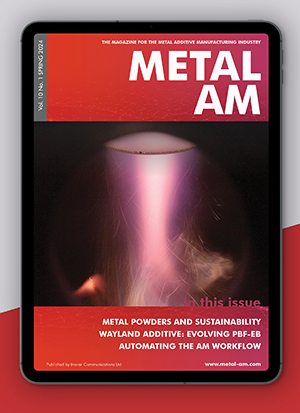Fraunhofer IPK reports research on functionally graded materials in Additive Manufacturing
October 27, 2023

To improve wear properties, the Fraunhofer Institute for Production Systems and Design Technology (IPK) in Berlin is researching the Additive Manufacturing of functionally graded materials. This enables components with customised material properties and aims to improve the service life, reports Raphael Marquardt, Fraunhofer Institute for Production Systems and Design Technology IPK.
“Conventional armouring for wear or corrosion protection can be produced by laser cladding, causing a discrete change between base and clad. However, especially the thermal working conditions of the coated components can cause cracks between the protective layer and the base material. This can result in splinters of the hard-facing, which can damage the entire machine,” explained Marquardt.
“To master this challenge, the Fraunhofer Institute for Production Systems and Design Technology (IPK) is using the possibilities of Additive Manufacturing to improve the bonding between base material and clad. By mixing different powders during the build-up of laser based directed energy deposition (DED), a layered transition can be produced. These so-called Functionally Graded Materials (FGM) enable material properties tailored to the specific requirements of the mechanical component. A schematic representation of the build-up strategy for FGM is shown in Fig. 1,” Marquardt added.

“This innovative technology offers a wide range of possible applications, from the entire field of classical mechanical engineering to aerospace. For wear and corrosion protection with FGM, the use of cobalt-chrome alloys as cladding material in the pump industry is an interesting application. For example, the service life of parts in mechanical desalination plants can be extended, improving the sustainability of drinking water production. In the case of full Additive Manufacturing of the components, the environmental footprint can also be reduced as less waste is produced when DED is used instead of traditional machining. This technology can also be used to repair and armour existing components. An example of a FGM fully build with the [laser-based DED] process can be seen in an external view as well as an etched cross-section in Fig. 2.”

He concluded, “The complex build-up process of the [laser-based DED] in combination with the material mixing of FGM requires a monitoring solution. To ensure the quality of the FGM produced, the signals from the machine’s integrated sensor can be analysed. In combination with artificial intelligence, the researchers were able to demonstrate a strategy to predicting the quality characteristics of the manufactured components. A trained feed-forward artificial neural network uses features from sensor signals to predict the density of the build job. Analysis of the information captured by the monitoring system also provides important insights into the build-up strategy. For example, the measurements from the working distance sensor can be compared to the initial value to see where the part is building up too much or too little material. This can help optimise process parameters in order to minimise defects and print first time right. The advantage of such an analysis are shown in Fig. 3, where a path planning error can be identified, as it leads to significant overbuild displayed by the orange circle.”
Download Metal AM magazine

















